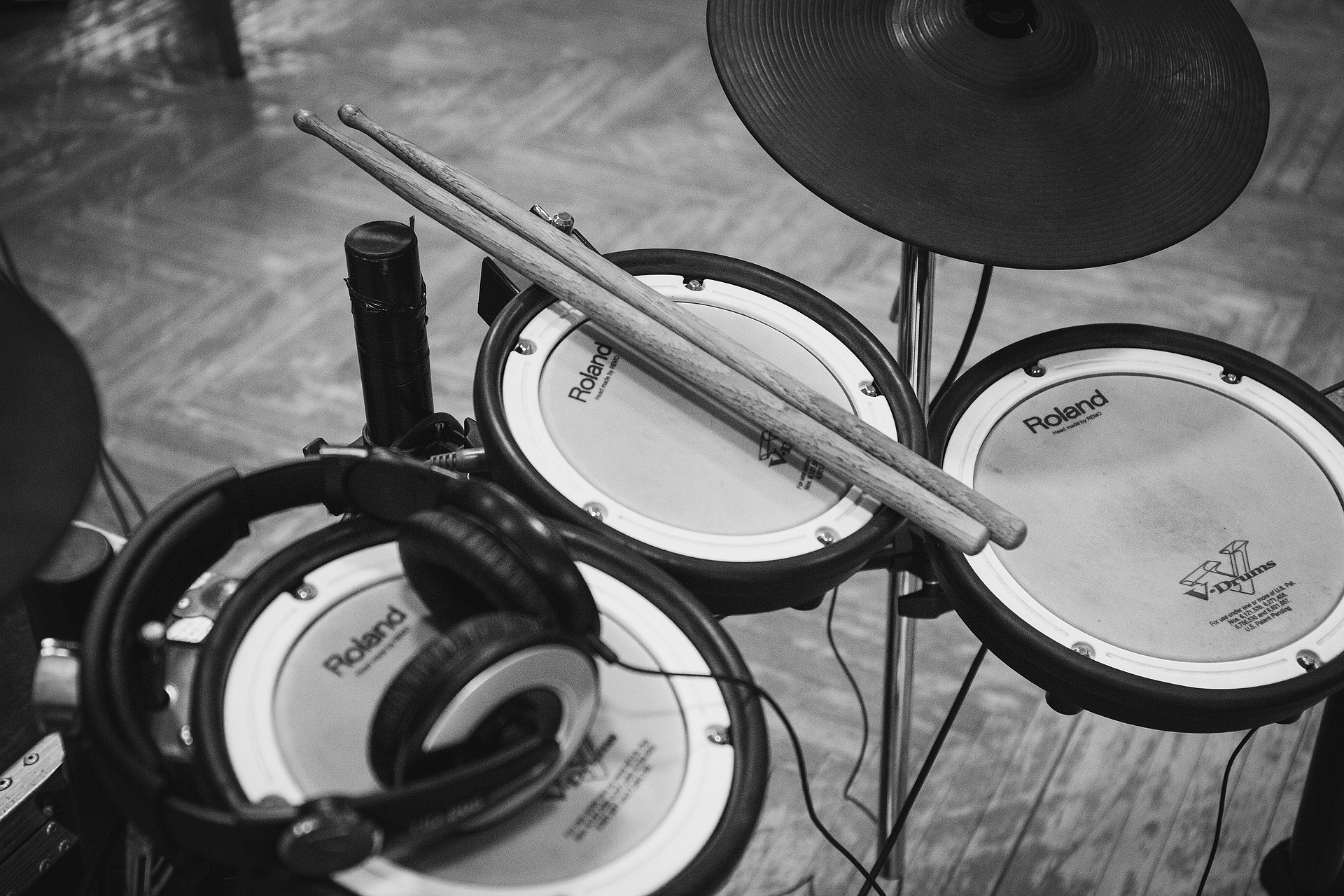In the world of music, innovation continually reshapes the ways in which we create, explore and experience sound. Amidst this ongoing evolution, the electric drum kit has stood out as a revolutionary tool, drastically altering the landscape for drummers and music enthusiasts around the globe.
From its introduction to its current state-of-the-art form, the electric drum set has been a subject of intrigue, excitement, and sometimes, skepticism. This comprehensive guide dives deep into the heart of electric drum kits, providing everything you need to know about these modern marvels of percussion.
What is an Electric Drum Kit?
At its core, an electric drum kit is a digital alternative to an acoustic drum set. It comprises pads and cymbals mounted on a rack, which, when struck, trigger sounds from an electronic module (sometimes referred to as the “brain”). These sounds can be anything from samples of acoustic drums to unique electronic beats, offering a wide range of auditory experiences. Far from being just a mimic of traditional drums, electric kits provide versatility and convenience that have cemented their place in both studios and live performances.
The Rise of Electric Drum Kits
The development of electric drum kits began as an endeavor to overcome the limitations posed by acoustic drum sets, notably the challenges of volume control and the need for a vast space to house the kit. Early models appeared in the late 1970s, but it wasn’t until the advancement in digital technology that electric drums truly began to shine. Today, they offer an unparalleled array of sounds, connectivity options, and portability that traditional sets cannot match.
Why Choose an Electric Drum Kit?
Introducing electric drum kits into the music scene has brought about a seismic shift in how drummers approach their craft. Here are several reasons why these instruments have found favor among beginners and seasoned professionals alike:
Volume Control and Sound Variety
One of the most appreciated benefits is the ability to control volume, an essential feature for apartment dwellers or late-night practice sessions. With a simple turn of a knob or a tap on a tablet, drummers can explore genres from jazz to metal without disturbing the neighbors.
Portability and Space Efficiency
Electric kits are compact and easy to transport, making them a great option for gigging musicians or those with limited space. Gone are the days of hauling around heavy drum shells and cymbals; an entire kit can now fit into a few bags.
Versatility and Recording Ease
With built-in metronomes, the ability to connect to music playback devices for practice, and USB/MIDI outputs for recording, electric drum kits offer functionalities that traditional sets cannot match. This makes them perfect for both live performances and studio work.
Practice Made Perfect
Electric drum kits often come with training modules, allowing drummers to track their progress, work on specific skills, and improve timing and precision. This feature is especially beneficial for beginners looking to master their technique.
Key Considerations When Choosing an Electric Drum Kit
When venturing into the world of electric drum kits, there are several factors to consider to ensure you find the right fit for your musical needs and preferences:
Build Quality and Responsiveness
The durability and responsiveness of the pads and pedals play a significant role in the overall playing experience. Look for kits with velocity-sensitive pads for a more dynamic and expressive performance.
Sound Module
The heart of any electric kit is its sound module. A high-quality module should offer a wide range of realistic drum sounds, programming capabilities, and connectivity options for external devices.
Size and Configuration
Consider the physical layout and number of components. Some drummers prefer a compact setup for simplicity and portability, while others may opt for larger, more complex setups that offer a fuller range of percussion elements.
Budget
Electric drum kits come in a range of prices, reflecting their features and build quality. It’s important to balance your budget with your requirements, remembering that higher-end models may offer greater longevity and performance.
Revolutionizing Learning and Creativity
Electric drum kits are not just instruments; they’re comprehensive learning tools. The ability to plug in headphones means beginners can practice for hours without worrying about noise complaints. Additionally, the integration with drumming software and apps opens up endless possibilities for learning, creativity, and exploration.
Electric Drum Kits in Professional Settings
While some purists may argue in favor of traditional drum kits, many professional musicians have embraced electric drum kits for their versatility and sound quality. From live performances to studio recordings, these kits enable drummers to bring a wide array of percussive textures to their music, pushing the boundaries of what’s possible.
Electric Drum Kit Maintenance and Care
Maintaining an electric drum kit is generally simpler than caring for an acoustic set but is no less important. Keeping the pads clean and free from dust can prevent triggering issues while ensuring all connections are secure and also helps in maintaining sound quality. Regularly updating the sound module’s firmware can also keep the kit running smoothly and unlock new features and sounds.
Conclusion
The world of electric drum kits represents a significant leap forward in the evolution of drumming. From the bedroom to the stage, these instruments offer drummers unparalleled flexibility, creativity, and control over their sound. Whether you’re a seasoned professional or just starting, an electric drum kit can open up a new realm of musical possibilities. As technology continues to advance, we can only imagine where the beat will take us next.

